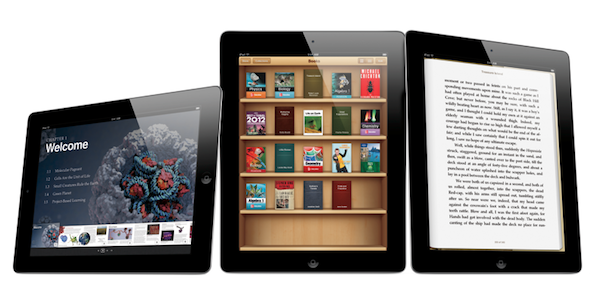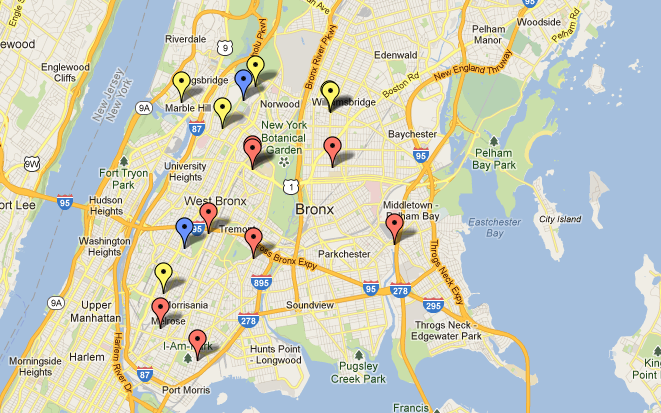
It was a gathering of true believers. With iPads in hand, hundreds of New York City teachers and administrators gathered for an Apple event sponsored by the United Federation of Teachers on April 17. The teachers didn’t need to be convinced that the iPad could be a useful classroom tool. They were eager to try out dozens of new educational apps on display.
The breakout stars were two of the newest educational initiatives for the iPad—digital, interactive iBooks textbooks designed for the device, and iBooks Author, which allows educators to create their own iPad textbooks.
But despite all the excitement about the iPad’s potential, no one knows if it really will help kids learn. The device is still relatively new: it was introduced in 2010. Comprehensive, long-term studies are years away.
Until then, many education technology experts think digital textbooks show the most promise. Mark Warschauer, a professor in the Department of Education and the Department of Informatics at the University of California, Irvine, who studies how the iPad is used in schools, compares the potential of digital textbooks to change learning to the way computers changed the process of writing. “We’re kind of going through the beginning of the same kind of stage in reading,” he said.
Warschauer says that with features such as video and 3-D images, a student can highlight and insert notes, look up a word’s definition quickly by highlighting it on screen, search for a specific word or passage and create study cards from their notes and highlights. Publishers can also easily update these books. The potential downside, Warschauer said, is that the interactive features may be more of a distraction than a traditional textbook.
As of now, the iBook store offers only 40 textbooks in math, science, history and a few other subjects, including music. The textbooks were launched when the updated app, iBooks 2, came out in January. iBooks author, which allows teachers to create textbooks with interactive features, was launched at the same time.
More books are being developed by several of the top makers of paper textbooks, such as Houghton Mifflin Harcourt, McGraw-Hill and Pearson.
Apple said most but not all its textbooks will be $14.99 or less, and volume discounts are available. Paper textbook prices can vary, but usually cost more than $14.99. For example, for the 2011-2012 school year, on average, the North Carolina’s public schools spent approximately $35 to $66 per textbook for each student. In the long run, says Warschauer, the digital books should save schools money over paper textbooks.
The Arlington Public Schools in Virginia are currently using interactive storybooks on the iPad, but haven’t adopted interactive textbooks yet, according to the district’s instructional technology coordinator, Camilla Gagliolo. All 32 of the Arlington Public Schools are using the iPad and would like to eliminate paper material as much as possible in the future, said Gagliolo. “We’re hoping that all of our curriculum material will be digital material and that they all will be interactive just like the new books that are starting to emerge.”
Interactive textbooks will be part of that goal, said Gagliolo. Though, she added, because the iBooks textbooks are so new, it could be several years before she can use them since her district has a lengthy approval process for new textbooks. Also, in order for digital textbooks to successfully replace paper ones, the district would need an iPad for every student—a substantial expenditure that would need to be in the budget.
Before interactive textbooks became available through Apple’s e-book store, iBooks, a few interactive textbooks were available in app form. One example is Houghton Mifflin Harcourt’s Algebra 1 app, HMH Fuse for iPad. It has text like a regular math textbook, but also features interactive lessons, explanations, quizzes and problem solving, as well as over 400 lesson videos.
The company did a pilot study with about 1,000 seventh and eighth graders in four California school districts during the 2010-11 school year. Teachers taught one class using the app and another with the traditional textbook. Students’ scores on the California Standards tests were used to measure the impact of the app.
Only one district, Riverside United, showed that students using the app scored higher (by nine percentage points) than those that didn’t use it, said Empirical Education, an educational research company that was hired to conduct the study. Houghton Mifflin Harcourt said these results showed that the app is effective in improving algebra achievement. But Empirical Education said there was no evidence to support that idea, and since Riverside reported more instruction time with the device than the other school districts, that could explain why their students scored higher.
Warschauer believes that in the long run, the iPad will have advantages as an educational tool in the K-12 classroom, especially for textbooks and in special education. But he adds that we need to wait to see the iPad’s long-term effects and wait for more larger, long-term studies. He also cautions that it’s not a solution to the country’s educational problems. “I don’t think it’s a kind of magic bullet to transform schools,” he said.


